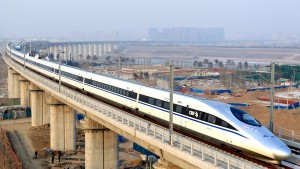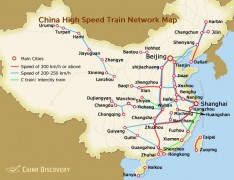5 Technologies That Make Life in China Convenient
Project Pengyou Intern, DaQuann Chung takes a look at 5 technologies you can’t live without in China.

As I prepare to move back home to America, I began to think about the things I will miss most about China. The first thing that came to mind was the convenience of mobile payments. This made me realize that China has developed in many tech areas that the U.S has yet to catch up on. China is leading the world in many tech areas that you may be unfamiliar with. Below take a look at five Technologies that I can’t live without in China:
1. Wechat

At first glance, WeChat may seem like a normal messaging app, but it is much more than that. With roughly 963 million monthly users WeChat is the most popular messaging app in China. However, unlike WhatsApp WeChat’s parent company Tencent has managed to make WeChat integrated into everyday life in China. WeChat is a one-stop app where you can pay your phone bill, order movie tickets, book train tickets, hail a cab and send money to friends using WeChat wallet.
2. Mobile Payments

China has two popular mobile payment options: Alipay and Wechat pay. Mobile payment transactions in China reached a record 81 trillion yuan (US$12.8 trillion) from January to October last year, driven by the vast number of consumers across the country who have looked beyond credit cards to more convenient, cashless systems. For the uninitiated: Alipay and WeChat are linked to a user’s bank account and operate via QR codes—unique digital barcodes that can be generated or scanned by smartphones to make a purchase. To confirm that purchase, users give a fingerprint scan or security pin, and money is instantly transferred from their bank account. It’s usually a seamless process and takes about half the time of using a credit or debit card in the United States. Mobile payments are used for a wide range of transactions, from paying for smartphone game upgrades and ordering takeaway food online to purchasing movie tickets and sending electronic hongbao – red packets with cash as gifts. In some places, you will even find that many vendors no longer accept cash, and only take mobile payments.
3. Online food delivery

Online food delivery services have taken off rapidly. The industry is dominated by two companies: Meituan Dianping backed by internet giant Tencent, and ele.me, whose main investor is Tencent’s rival Alibaba. In 2016, roughly 300 million people in China used online food services. The services already cover 1,300 cities and in 2016 the market was estimated to be worth over 240 billion yuan (US$37 billion). The services work through apps, which show lists of food providers near the user’s location and allow them to search for specific restaurants that may not be on the list. Clicking on the restaurant brings up the menu and the ordering system, and users can pay using mobile payment options like Alipay or WeChat pay. The apps also show the location of the delivery driver, so an order can be tracked, and allow users to rate the food and service.
4. QR codes for everything




Simply by scanning QR codes, smartphone users can pay bills, purchase goods via mobile payment apps, and access information. Walking down a street in China it is not uncommon to see QR codes everywhere from street vendors to advertisements.
5. Fast Trains


The Chinese government is proud of their hail speed railway and they should be. As of 2017, China has the longest and most used HSR network. The HSR reaches 29 of the 33 provincial level divisions and exceeded 16,000 mi in length, accounting for about two-thirds of the world’s high-speed rail tracks in commercial service. What has made the HSR network popular is that it has significantly cut down the travel time between popular destinations in China. A regular slow train from Beijing to Shanghai takes around 12 hours. With the fast train, you can reach Shanghai from Beijing in around 4 to 6 hours.
Although China is still a developing nation other countries can look to it as they seek to further develop in these areas of tech. As I return home, I know I will certainly miss the accessibility of these things, and I’m holding out hope that America will play a very fast game of catch up when it comes to these technologies.